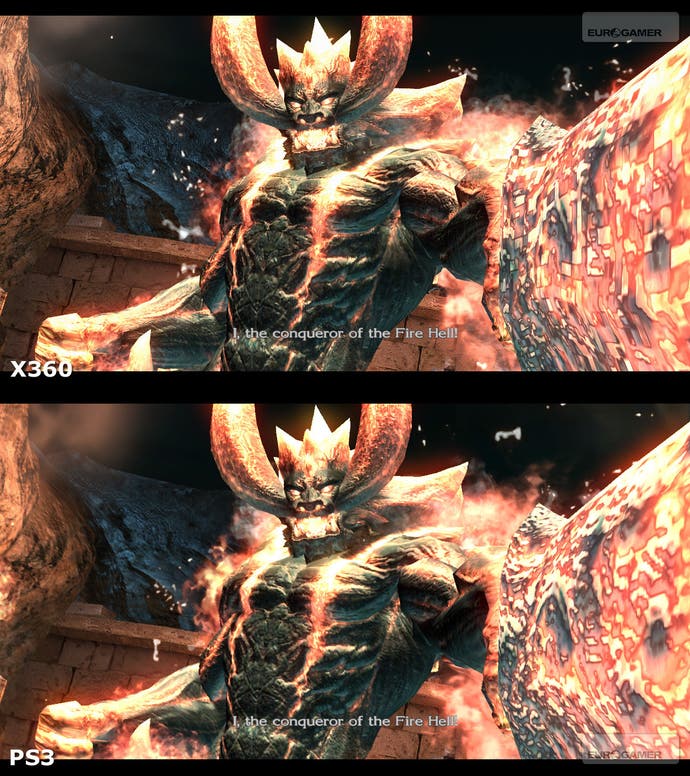Xbox 360 vs. PS3 Face-Off: Round Nine
DMC4, The Club, Turok, FIFA Street, PES, Juiced.
Devil May Cry 4
A controversial 7/10 Eurogamer score for this one, but what can I say? I love this game. I love its arcade-style score attack roots, its combo system, its characters, its bosses, its sheer class. Sure, Devil May Cry 4 may not be perfect, and it certainly isn't too far removed from its PS2 origins, but Capcom knew what its fanbase wanted from this game and offered up the goods in spades.
Whatever your take on the gameplay, Devil May Cry 4 is the first serious cross-format workout we've seen for Capcom's proprietary Framework MT engine. As most readers probably already know, code is developed on PC before being ported to Xbox 360 and PlayStation 3 for further tinkering, optimisation and refinement. The result is a game that, small technical differences aside, is basically the same on both consoles - certainly to the point where nobody is being tangibly short-changed by their choice of gaming implement.
The technical differences are quite intriguing though, the most blatant being how both games achieve their smooth anti-aliased 720p visuals. With Xbox 360 it's a case of hardware-assisted AA as per the norm, but with PS3 what you might call 'temporal' anti-aliasing is in evidence. Basically, Capcom is blending frames together in order to smooth off the edges and the rule of thumb appears to be that the faster the movement on-screen, the more frames appear to be sampled and thus there's a higher degree of blur. Before we go any further, regular readers of these features will know that pretty much any kind of gratuitous blurring really annoys me, but in this case I think the effect just works okay.

That said, while the 360 game does tend to have a shimmering effect on its most intricate textures, personally I think it's the better-looking game, but in all honesty, the effect is only really a noticeable issue when you have the two versions running side-by-side. I doubt anybody sampling the game on PS3 will be returning their copy because of this effect. In terms of compensation for PS3 owners, it appears to be ever-so-slightly less prone to screen tear. Both versions appear to have been expertly colour-balanced so the difference in gamma levels seen in many cross-format titles isn't an issue here.
Loading times are also slightly reduced on PS3, but we're literally talking about 3-5 seconds difference between the two games - barely relevant in the greater scheme of things. Certainly the notion of a 25-minute, 5GB install on PS3 is much more of an issue for me. In my view, console gaming is all about immediate fun. I don't really want to be in a position where I have to free up hard disk space just to play my games - particularly if a future reinstallation is going to take another 25 minutes. And neither should I be required to DIY-upgrade my console with a bigger hard disk just to accommodate lazy developers. You can argue this one out amongst yourselves, but European gamers should think themselves lucky they weren't lumbered with the 20GB PlayStation 3 hardware. Between DMC4 and Lost Planet: Extreme Condition, over the half of the HDD space will be gone simply to accommodate these two titles.
Overall though, DMC4 is a beautiful game no matter what console you own, and another example of how Japanese developers in particular seem to be making the effort in handing in accomplished PS3 code.
Face-Off: Round Nine Index
- Devil May Cry 4
- The Club
- Pro Evolution Soccer 2008
- FIFA Street 3
- Juiced 2
- Turok







